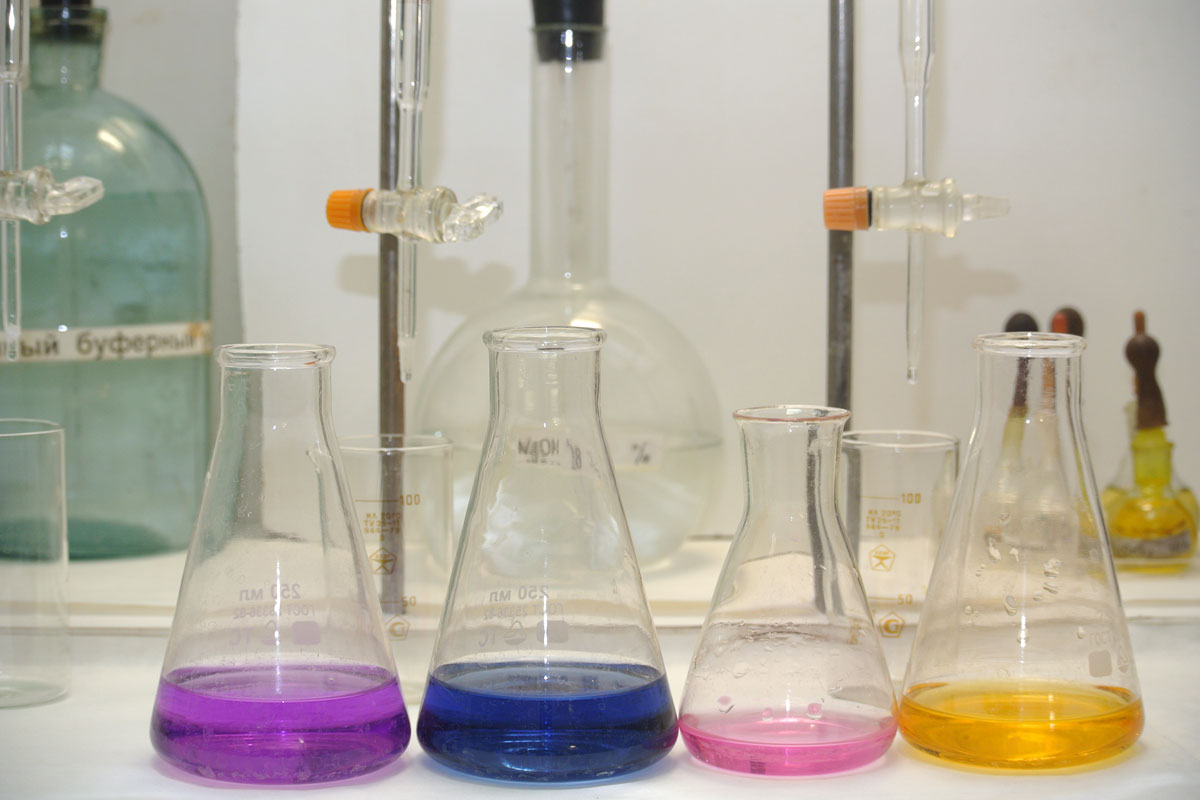
The working principle of metal indicator
The metal indicator is a coordination organic dye that can form colored complexes or chelates with metal ions. If pH=10, use chrome black T indicator to indicate the end point of EDTA titration of Mg2+. Before the titration, there was only Mg2+ in the solution. After adding chrome black T (HIn2), a coordination reaction occurred and the resulting Mgn was red. Before the titration started to the stoichiometric point, because the product MgY2- produced by the reaction of EDTA and Mg2+ was colorless, the solution was always the red of MgIn.
At the stoichiometric point, all the metal ions have reacted completely, and a slight excess of EDTA has strong chelating properties, and replaces the chrome black T in the chrome black T metal chelate. At pH=10, the chrome black T is pure Blue, so at the end of the reaction, the color of the solution changes from red to blue. This color change can be used to indicate the end of the titration.

The conditions that a metal indicator should have
A good metal indicator should generally have the following conditions
(1) Under the pH conditions required for titration, the indicator and the metal-indicator chelate have obvious color changes.
(2) The metal-indicator chelate should have appropriate stability, and its stability must be less than that of EDTA and metal ions. Otherwise, EDTA cannot extract metal from the metal-indicator chelate at the stoichiometric point, and no color change can be seen. However, the stability of the metal-indicator chelate should not be too low, otherwise, the chelate will dissociate before the stoichiometric point, the indicator will be released and freed, the end point will be earlier, and the discoloration will not be sensitive. Therefore, the stability of the metal-indicator chelate should be appropriate to avoid causing titration errors.
(3) The reaction between indicator and metal ions should be rapid, and In and MIn should be easily soluble in water.
(4) The indicator should have good selectivity, and only show color with the measured ion under the measurement conditions. If the selectivity is not ideal, try to eliminate the interference.
(5) The indicator itself should be stable in the air and easy to store. Most metal indicators are easy to be oxidized in the air or in aqueous solution due to their own structural characteristics, so it is best to use them now. Keep it away from light and keep it sealed in a brown container. Sometimes a solid diluted with salt is used directly. The indicator and some ions form extremely stable complexes. Dropping excessive EDTA can not deprive the metal ions in the MIn complex. The indicator has no color change near the stoichiometric point. This phenomenon is called the blocking phenomenon of the indicator. For example, Ai has a blocking effect on the indicator xylenol orange and can form a stable chelate with the indicator, so back titration can be used to avoid direct contact. If it interferes with the ion blocking indicator, add another complexing agent with stronger chelating ability than the indicator to react with it to eliminate the blocking phenomenon.
The stability of MIn is equivalent to that of MY or In and MIn are not easily soluble in water, resulting in no discoloration even after the stoichiometric point, the end point is prolonged, and excessive EDTA is consumed. This phenomenon is called ossification. Organic solvents can be added to increase its solubility or heating to promote dissolution and speed up the reaction rate. However, it is best to choose an indicator that is easily soluble in water. In addition, if the display agent is improperly stored, oxidative deterioration will occur.
In summary, when choosing a metal indicator, you need to investigate the stability of the metal-indicator chelate at a given pH, the difference in stability between the chelate and the EDTA-metal chelate, the sensitivity of color changes, and interference The removal of ions, and so on, finally need to verify the accuracy of the indicated results through experiments.



